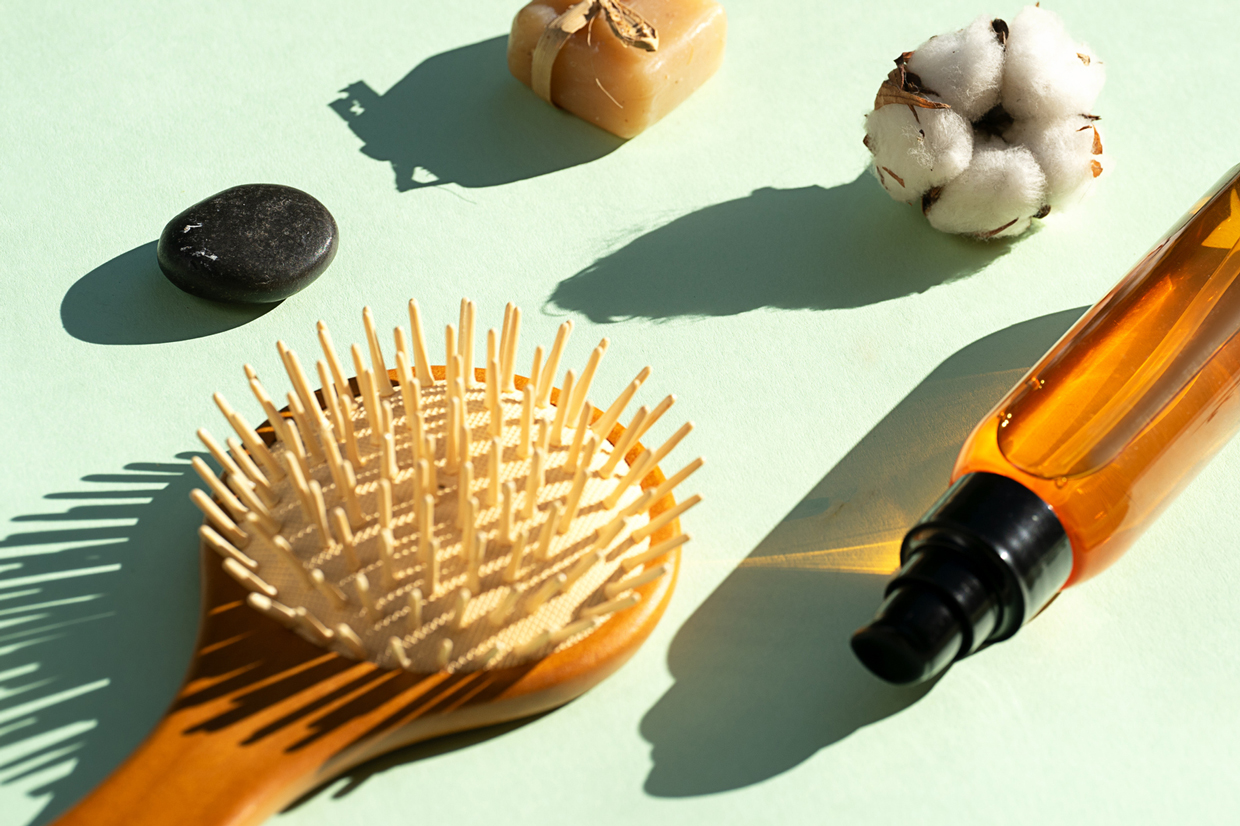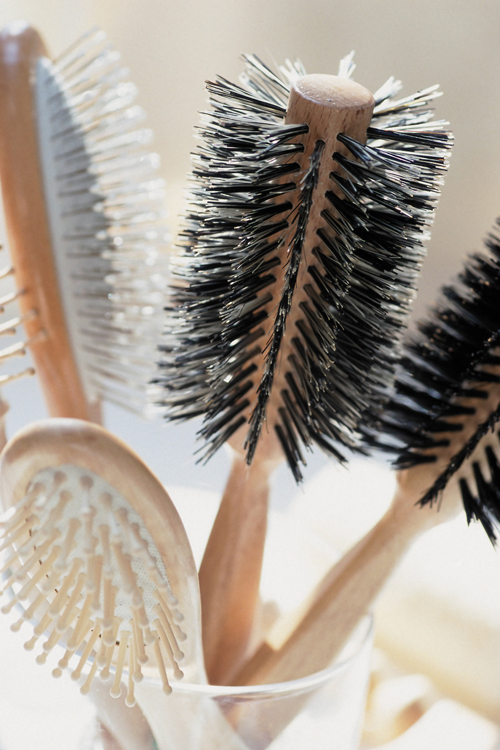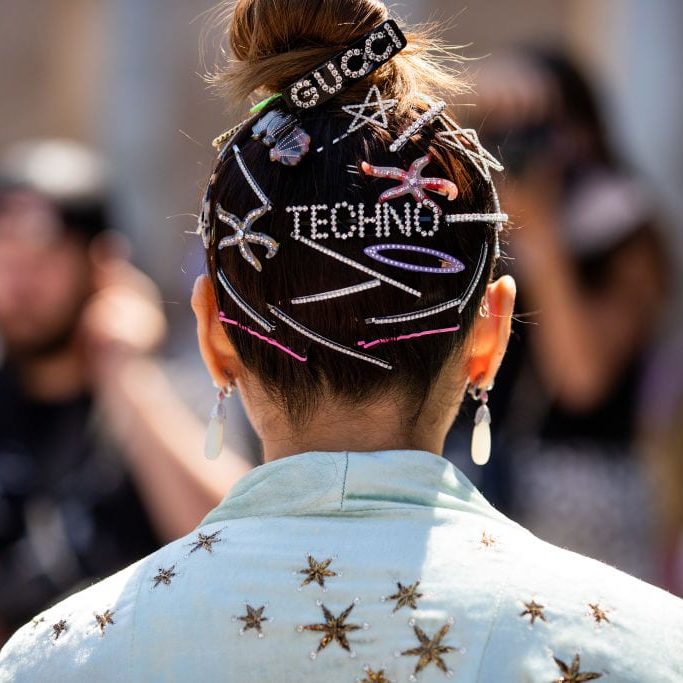Take a good, hard look at your hairbrush. It’s likely you use it every day, but it probably doesn’t get the love and care that it needs to perform its best. Does it look gunky from styling products? Maybe it’s overflowing with stray hairs. Or, you’re noticing a lot of dead skin cells and buildup. Whatever the case, it’s officially time to stop ignoring your lowly brush. Even though maintaining your hairbrushes doesn’t get the same hype as cleaning your skincare and makeup tools, it’s just as important. Every time you brush your hair, you’re leaving behind oil, dandruff, buildup from styling products, and dead skin cells on the bristles. And if you’re not taking care of your brushes, this could lead to scalp issues like irritation or breakouts.
If your hairbrush is hanging on by its last bristle or you’re curious to know how to tell if you need a new one, you’ve come to the right place. Up ahead, we tap an expert to find out once and for all how to care for our brushes, including when it’s time to toss them.
How Long Do Hairbrushes Last?
As with most products, quality plays a huge part in the lifespan of a hairbrush. According to Trey Gillen, a hairstylist and creative director of education at SACHAJUAN, if you purchase a more budget-friendly brush that’s typically made of plastic or rubber, you can expect it to last somewhere between seven to 12 months. Brushes that are more like investment pieces — such as the iconic Mason Pearson Hair Brush designed with premium-grade boar bristles — can “last a lifetime,” with proper care, says Gillen. For this reason, Gillen recommends investing in a good-quality brush.
For a high-quality hairbrush that you’ll regularly use, Gillen says there are a few things to consider. First, bristle strength should be top of mind as “a flimsy bristle will not uphold the rest of time.” Gillen says to go for a brush with “nice firm bristles, not too stiff but not too flimsy.” Another thing to consider is the brush’s hardware and how it is made. “One solid piece is preferred, as the more attachable parts, the more likely those parts are going to separate or break,” he explains.
Gillen also says to pay attention to the brush side of the handle and consider whether your hair could get stuck or tangled by the way the end of the brush is capped off or finished. “Many brushes will get your hair stuck in this area and cause small amounts of breakage,” he notes.
4 Signs It’s Time for a New Hairbrush
When determining if it’s time for a new hairbrush, Gillen says there are a few things to consider, depending on the type of hairbrush.
Round Brush Bristles Start Curving
First, if you have had your round brush for a while and start to notice “the bristles dip down in the center of the brush, creating a smile or subtle U-shape,” it’s time to replace it.
Bristles Are No Longer Straight and Firm
For bristled brushes, the bristles “will sometimes bend, deform, and break due to high heat or intense pressure on them,” says Gillen. “If the bristles aren’t straight and firm anymore, it’s time to buy a new one.”
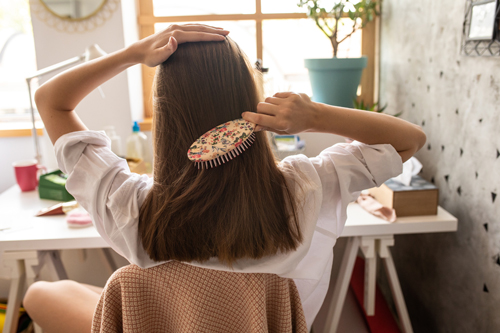
The Handles Start to Crack
Another thing to check is the brush handle. “Many times, the handles will crack or loosen at the attachment point,” explains Gillen. “If you can’t maintain constant tension without the handle moving around or bending, your blow-dry will look just as wonky as your brush handle,” he adds.
The Beaded Bristles Melt
If your brush has tiny beads at the tips of each bristle, they may start to melt or break off during styling. When this happens, Gillen says it’s time for a new one. “Most of the time, these tiny beads are put there to protect your scalp from overly aggressive brushing and scratching,” he explains, adding that continuing to brush with beadless bristles could “cause scalp issues and damage hair follicles.”
How Often Should You Clean Hairbrushes?
The longevity of a hairbrush might mostly depend on its quality but taking good care of your brushes is always a good idea as it can “help your brushes last longer,” says Gillen. When you take care of your brushes, they perform their best.
The first step in cleaning any hairbrush is to remove the strands that get wound up and woven through the bristles. “I recommend cleaning the hair out of the bristles twice a week,” says Gillen. To do this, Gillen says to reach for a wide-tooth comb and “rake the comb through the bristles of your brush [to] remove all the hair that gets stuck in the brush.”
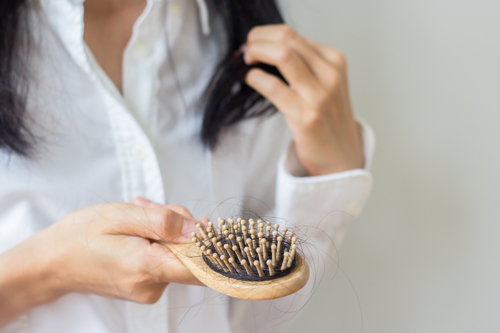
As far as giving your hairbrush a rinse-and-repeat is considered, you’ll want to plan for a deep clean once a month. “Washing and rinsing your brushes with shampoo and hot water once a month will remove any product build-up and dead skin that gets stuck on your brushes,” says Gillen. To clean your brushes, fill your sink or a bucket with hot water and add shampoo. Soak brushes for around five to 10 minutes before rinsing thoroughly with fresh water. After they’re clean, place them with the bristles facing down on a towel and allow them to thoroughly air-dry before using. Before cleansing your hairbrush, check your brush’s care guide, as some brushes might require a more customized care routine.
We only recommend products we have independently researched, tested, and loved. If you purchase a product found through our links, Sunday Edit may earn an affiliate commission.
